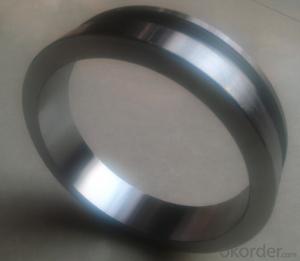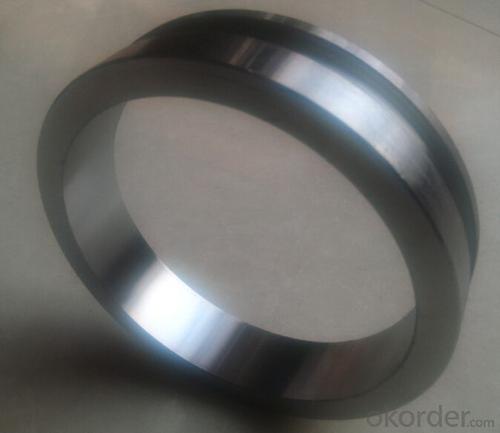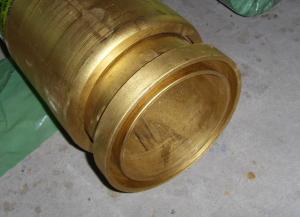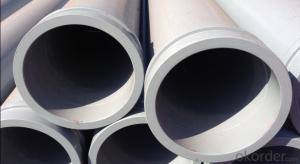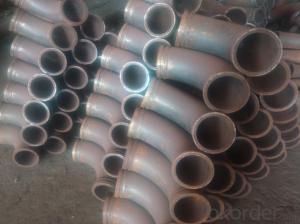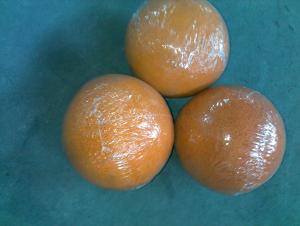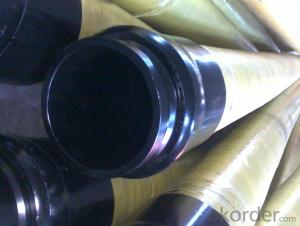High Quality 148 SK FLANGE with TWO SIDE DN 125MM
- Loading Port:
- Tianjin
- Payment Terms:
- TT or LC
- Min Order Qty:
- 5 set
- Supply Capability:
- 10000 set/month
OKorder Service Pledge
OKorder Financial Service
You Might Also Like
Product Description:
Name:148 SK FLANGE with TWO SIDE DN 125MM
Materials: Steel 20
Inner Diameter: 125mm
Outer Diameter: 148mm
Notes: total series of concrete pump flange for different brand concrete pump
Scope of Application of the Equipment
High Quality 148 SK FLANGE with TWO SIDE DN 125MM is a concrete pump spare parts for combined elbows and delivery pipes in concrete pump operations. It can be widely used in the various types of concrete pump like (PUTZMEISTER, SCHWING, CIFA, SANY, ZOOMLION, IHI, KYOKUTO Etc) available from us.
Product Advantages:
High Quality 148 SK FLANGE with TWO SIDE DN 125MM are durable, strong, and resists corrosion.
Main Product Features:
· Premium quality
· Prompt delivery & seaworthy packing (10-20 days after receiving deposit)
Reliable performance
Easy and smooth operation
High safety.
· Professional Service
· Competitive pricing
Product Specifications:
Every 60pcs put in one seaworthy wooden box, and 20 boxes in one 20feet container.
FAQ:
Q1: Why buy Materials & Equipment from OKorder.com?
A1: All products have its ISO certifications, adheres to the highest standards and a commitment to supply chain safety and customer satisfaction.
Q2: How do we guarantee the quality of our products?
A2: We have established an advanced quality management system which conducts strict quality tests at every step, from raw materials to the final product. At the same time, we provide extensive follow-up service assurances as required.
Q3: How soon can we receive the product after purchase?
A3: Within three days of placing an order, we will begin production. The specific shipping date is dependent upon international and government factors, but is typically 10 to 30 workdays.
Q4: If we can produce some male and female flanges according to customersrequest?
A4: Yes, we can produce male and female flanges according to the difference country situations and different concrete pump to make it suitable to the market and customers. We have very professional technical team to make the design.
Q5: How to make a quick resolution for after service?
A5:We have overseas branches all-around of world, IF needed, the seller shall dispatch 2 engineers to the buyer's site for supervision of training. The buyer shall make available of necessary facilities &skilled personnel at site for training.
Images:
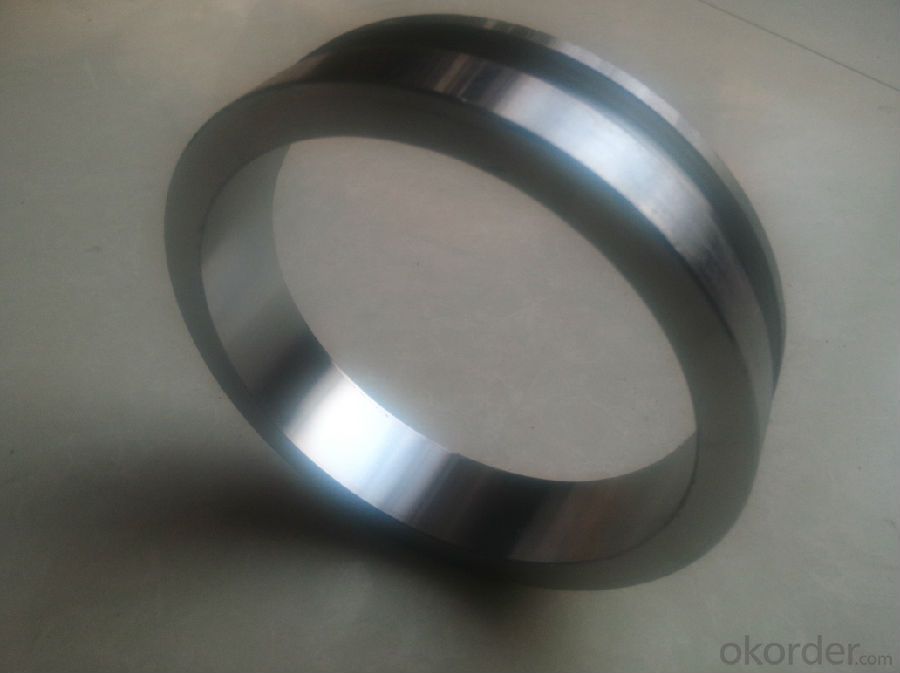
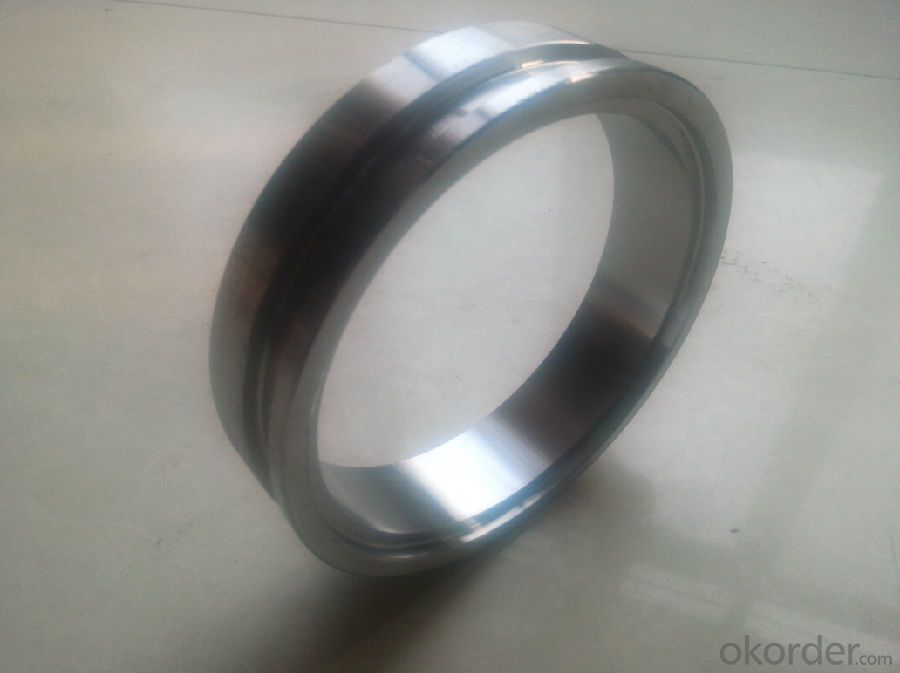
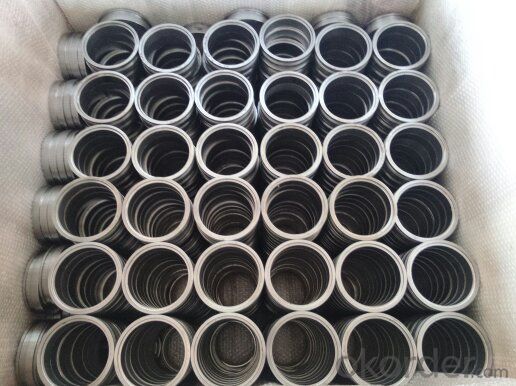
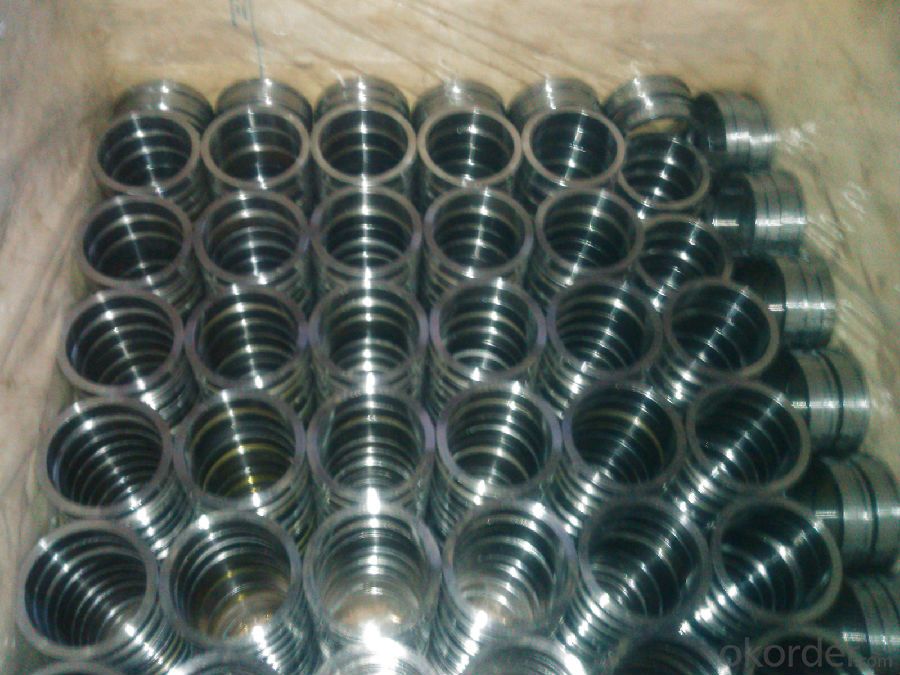
- Q: Are there any specific brands or manufacturers that are recommended for concrete pump spare parts?
- Yes, there are several brands and manufacturers that are highly recommended for concrete pump spare parts. Some of the top brands in the industry include Putzmeister, Schwing, Sany, and Zoomlion. These brands are known for their high-quality products, reliability, and durability. They have a wide range of spare parts available for various models of concrete pumps, ensuring that customers can find the specific parts they need. Additionally, these brands have established a strong reputation in the market and have a vast network of dealers and distributors worldwide, making it easier for customers to access their spare parts. It is always advisable to choose spare parts from reputable brands and manufacturers to ensure the longevity and performance of your concrete pump.
- Q: Are there any specific maintenance requirements for concrete pump spare parts?
- Concrete pump spare parts have specific maintenance requirements that must be met to ensure optimal performance and prolong their lifespan. To achieve this, regular inspection and maintenance are necessary. Here are some key maintenance requirements for concrete pump spare parts: 1. Cleaning: It is important to regularly clean concrete pump spare parts such as pipes, hoses, and valves to remove any accumulated debris, hardened concrete, or contaminants. This can be accomplished by using appropriate cleaning agents and tools. 2. Lubrication: To minimize friction and wear, it is crucial to properly lubricate moving parts like pistons, cylinders, and bearings. It is recommended to use lubricants specifically designed for concrete pump spare parts, following the manufacturer's guidelines. 3. Inspection: Conduct regular inspections of all spare parts to identify signs of wear, damage, or misalignment. This includes checking for cracks, leaks, loose connections, or excessive wear in seals, O-rings, and gaskets. 4. Replacement: Promptly replace any damaged or worn-out spare parts to prevent further damage or potential breakdown of the concrete pump. It is essential to use genuine spare parts recommended by the manufacturer to ensure compatibility and performance. 5. Storage: When not in use, store concrete pump spare parts in a clean and dry environment to prevent corrosion or damage. Utilize proper storage racks or containers to keep the parts organized and protected. 6. Training: Adequately train operators and maintenance personnel on the correct handling, maintenance, and replacement procedures for concrete pump spare parts. This ensures that maintenance tasks are carried out correctly and efficiently. By adhering to these maintenance requirements, concrete pump spare parts can be maintained in excellent working condition, guaranteeing reliable and efficient operation of the concrete pump system. Regular maintenance not only helps prevent unexpected breakdowns but also enhances the overall performance and longevity of the spare parts.
- Q: What are the indications of a damaged concrete pump boom?
- There are several indications that can point to a damaged concrete pump boom. These indications can include: 1. Visual damage: One of the most obvious signs of a damaged concrete pump boom is visible physical damage. This can include cracks, dents, or deformities in the boom structure. Any signs of structural damage should be taken seriously as they can compromise the integrity of the boom. 2. Leaks: Another indication of a damaged boom is the presence of leaks. If you notice hydraulic fluid or water leaking from the boom, it could be a sign of a damaged hose or fitting. Leaks can not only affect the performance of the pump but also pose a safety risk to the operator and those working around the equipment. 3. Misalignment: A damaged boom may also exhibit misalignment issues. If the boom is not straight or appears to be bent at an odd angle, it could indicate damage. Misalignment can affect the accuracy and efficiency of concrete placement, potentially leading to uneven or improper pouring. 4. Unusual noises: Strange or excessive noises during operation can be a sign of a damaged boom. Rattling, grinding, or squealing sounds can indicate loose or worn-out components, such as pins, bushings, or bearings. These noises should not be ignored, as they could worsen if not addressed promptly. 5. Reduced performance: A damaged boom may also result in reduced performance. If you notice a decrease in pumping capacity or difficulties in controlling the boom's movement, it could be an indication of damage. Poor performance can be caused by various issues, including hydraulic system problems, structural damage, or worn-out parts. In conclusion, it is crucial to regularly inspect and maintain concrete pump booms to identify any indications of damage. Promptly addressing these issues is essential to ensure the safety of operators, prevent further damage, and maintain the efficiency and performance of the equipment.
- Q: What are the different types of concrete pump hopper cylinders?
- There are several different types of concrete pump hopper cylinders that are commonly used in the construction industry. These cylinders play a crucial role in the operation of concrete pumps by providing the necessary pressure and force to move the concrete through the system. One type of concrete pump hopper cylinder is the single-acting cylinder. This type of cylinder operates by using hydraulic pressure to extend the piston rod, which in turn pushes the concrete out of the hopper and into the pumping system. Single-acting cylinders are known for their simplicity and reliability, making them a popular choice for many construction projects. Another type of concrete pump hopper cylinder is the double-acting cylinder. As the name suggests, this type of cylinder operates in both directions, allowing for a more efficient and powerful pumping process. Double-acting cylinders are capable of pushing the concrete out of the hopper during the extension stroke and pulling the piston rod back during the retraction stroke, resulting in a higher pumping capacity and increased productivity. Additionally, there are also different sizes and capacities of concrete pump hopper cylinders available, ranging from smaller cylinders suitable for smaller construction projects to larger cylinders capable of handling heavy-duty pumping operations. The choice of cylinder size depends on factors such as the volume of concrete to be pumped, the distance and height of the pumping location, and the specific requirements of the project. In conclusion, the different types of concrete pump hopper cylinders include single-acting cylinders and double-acting cylinders. Each type has its own advantages and is suitable for different construction applications. The size and capacity of the cylinder should be chosen based on the specific needs of the project. Ultimately, selecting the right type of cylinder is crucial for ensuring efficient and effective concrete pumping operations.
- Q: What is the purpose of a concrete pump wear plate?
- To safeguard the pumping system against the abrasive characteristics of concrete, a concrete pump wear plate is employed. In the course of transferring concrete from the mixer to the construction site, the wear plate acts as a shield, preventing direct contact between the pumping system and the abrasive concrete. Consequently, the detrimental effects caused by the constant flow of concrete are minimized. The wear plate is typically constructed from durable materials such as hardened steel or tungsten carbide, which possess resistance against the abrasive forces exerted by the concrete. By implementing a wear plate, the lifespan of the pumping system is significantly prolonged, thereby reducing the frequency of repairs and replacements. Ultimately, the objective of a concrete pump wear plate is to ensure the efficient and dependable operation of concrete pumps by safeguarding and preserving the integrity of the pumping system.
- Q: Can I get spare parts for both single-cylinder and multi-cylinder concrete pumps?
- Spare parts for both single-cylinder and multi-cylinder concrete pumps are readily available. Various manufacturers and suppliers offer a wide range of spare parts for different concrete pump types, including single-cylinder and multi-cylinder models. These spare parts comprise hydraulic cylinders, pistons, seals, valves, hoses, and other crucial components that may require replacement due to wear and tear or damage. To ensure compatibility and availability, it is vital to contact the concrete pump's specific manufacturer or supplier and inquire about the spare parts suitable for your particular model.
- Q: How can a faulty pressure gauge affect the concrete pumping process?
- The concrete pumping process can be significantly affected by a faulty pressure gauge in various ways. To begin with, inaccurate readings from the gauge can result in an incorrect evaluation of the pressure within the system. Consequently, this can lead to the application of excessively high or low pressure during pumping, which can cause a range of issues. If the faulty pressure gauge displays a higher pressure than the actual value, it can result in the over-pressurization of the concrete pump. This can lead to potential damage to the equipment, such as burst hoses or pipes, which poses a danger to nearby workers. Additionally, excessive pressure can cause the concrete to be pumped forcefully, potentially resulting in material splattering or leaking from the delivery system. This leads to wastage and an uneven distribution of the concrete. On the other hand, an incorrectly low pressure reading from the faulty gauge can also create problems. Insufficient pressure within the pumping system can prevent the concrete from being adequately delivered to the desired location. This can cause delays in the construction process and result in uneven or incomplete concrete placement, which affects the integrity and strength of the structure being built. Moreover, a faulty pressure gauge can contribute to the inaccurate monitoring of the concrete's slump or consistency. The pressure gauge is commonly used as an indicator of the concrete's flowability. If the gauge is faulty, it can provide misleading information about the material's workability. As a result, the concrete mix can be either too fluid or too stiff, leading to difficulties in pumping and potentially compromising the quality of the finished concrete structure. In conclusion, a faulty pressure gauge can have severe consequences on the concrete pumping process. It can cause over-pressurization, material wastage, uneven distribution, construction delays, and compromised concrete quality. Therefore, it is crucial to regularly inspect and maintain pressure gauges to ensure their accuracy and reliability. This promotes safe and efficient concrete pumping operations.
- Q: How can a malfunctioning control lever affect the pump's operation?
- The pump's operation can be significantly affected in several ways by a control lever that is malfunctioning. To begin with, the control lever is responsible for regulating the flow rate and pressure of the pump. If it is not functioning properly, it may be unable to accurately adjust these parameters, resulting in the pump not working correctly. Additionally, the ability of a malfunctioning control lever to effectively turn the pump on or off may be compromised. This can lead to the pump running continuously, even when it is unnecessary, causing unnecessary wear and tear on the pump and increased energy consumption. Furthermore, the control lever is often used to control the direction of flow in the pump. If it is not functioning correctly, it may be unable to switch the pump between forward and reverse modes, impacting the pump's efficiency in performing its intended tasks. Moreover, the overall safety of the pump operation can be affected by a malfunctioning control lever. If the lever fails to respond or becomes stuck in a position, it can potentially result in over-pressurization, leaks, or other hazardous situations, putting both the pump and surrounding equipment or personnel at risk. In conclusion, a control lever that is malfunctioning can disrupt the accurate regulation of flow rate, pressure, and direction of flow in the pump, potentially leading to improper functioning, increased energy consumption, reduced efficiency, and safety hazards. Therefore, it is crucial to promptly address any issues with the control lever to ensure the reliable operation of the pump.
- Q: Can concrete pump spare parts be tested for compatibility with different types of concrete mixes?
- Testing for compatibility with different types of concrete mixes is crucial for concrete pump spare parts. These spare parts, including pipes, hoses, and valves, are specifically designed to handle distinct pressures, flow rates, and concrete mix types. To determine compatibility, the spare parts undergo testing with various concrete mix compositions, which encompass diverse aggregate sizes, cement types, and admixtures. This testing procedure assesses the spare parts' ability to withstand the unique characteristics and properties of different concrete mixes. The compatibility testing process evaluates factors such as durability, resistance to abrasion and corrosion, and the capacity to meet specific pumping requirements for various concrete mixes. This testing can be carried out either in laboratory settings or on-site, depending on the project's specific needs. By conducting compatibility testing on concrete pump spare parts, potential issues like clogging, wear and tear, or reduced performance can be identified and resolved in advance. This ensures smoother and more efficient concrete pumping operations, reducing downtime and enhancing overall productivity. It is important to note that manufacturers of concrete pump spare parts often provide technical specifications and guidelines for their products, including information on compatibility with different concrete mix types. Adhering to these guidelines and performing compatibility testing aids in achieving optimal performance and longevity of the spare parts, resulting in successful concrete pumping operations.
- Q: What are the signs of a worn-out concrete pump piston?
- There are several signs that can indicate a worn-out concrete pump piston. Firstly, if the concrete pump is experiencing a decrease in output or performance, it could be a sign that the piston is worn-out. This decrease in performance can be seen through reduced pumping pressure or slower pumping speed. Another sign of a worn-out concrete pump piston is increased leakage. If you notice excessive hydraulic oil or water leaking from the pump, it could be an indication that the piston is no longer sealing properly. This leakage can also lead to hydraulic fluid contamination, which can further damage the pump components. Furthermore, a worn-out piston can cause irregular concrete flow. If you observe inconsistent and uneven concrete delivery, such as pulsating or surging flow, it may be due to an uneven wear pattern on the piston. This can lead to poor concrete quality and affect the overall efficiency of the pumping operation. In addition, excessive vibration and noise during the pumping process can also be signs of a worn-out piston. Vibrations can occur due to the piston not moving smoothly within the cylinder, causing friction and resulting in noise. These vibrations and noises can also indicate other underlying issues with the pump, so it is essential to address them promptly. Lastly, visual inspection can provide valuable insights into the condition of the concrete pump piston. Signs of physical damage, such as cracks or excessive wear on the piston surface, are clear indications of a worn-out piston. These damages can be caused by abrasive materials or harsh operating conditions. Overall, if you notice any of these signs or suspect that your concrete pump piston is worn-out, it is crucial to have it inspected and replaced by a professional. Timely maintenance and replacement of worn-out pistons can prevent further damage to the pump and ensure smooth and efficient operation.
Send your message to us
High Quality 148 SK FLANGE with TWO SIDE DN 125MM
- Loading Port:
- Tianjin
- Payment Terms:
- TT or LC
- Min Order Qty:
- 5 set
- Supply Capability:
- 10000 set/month
OKorder Service Pledge
OKorder Financial Service
Similar products
Hot products
Hot Searches
Related keywords
